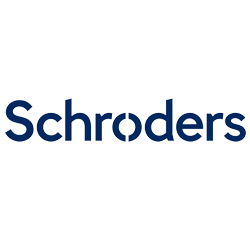About the PAYS ETF
Schroder Absolute Return Income (Managed Fund) (PAYS) is an actively managed exchange traded fund (ETF) seeking to boost income while preserving capital. This actively managed fixed income strategy has a track-record of meeting investor needs for reliable monthly income, while providing peace of mind that there is a strong focus on managing risk, should markets fall.
PAYS ETF Performance Review
Year
7
Year
4.2
Year
2.8
Inception
2.9
Yield
Maturity
4.9
Data Current To: 28/02/2025
Our review of PAYS ETF
Global fund
Average credit quality of A
Listed on Cboe
Aims to deliver regular monthly income of 5.00% p.a.
Exposed to interest rate risk with 67% of the portfolio invested in fixed rate bonds as at 31 December 2023
Includes an allocation to sub investment grade bonds
What we like about the PAYS ETF
Actively managed
Discloses fixed, floating rate and other percentages
Provides a complete list of all the underlying investments
Majority of investments are Australian with 41.5% in other markets as at 31 December 2023
Things to be aware of about the PAYS ETF
Does not disclose running yield
PAYS ETF Investment Strategy
To outperform the RBA Cash Rate after fees over the medium term while aiming to avoid negative returns over any rolling 12-month period.
What does the PAYS ETF Invest In?
PAYS is a Multi Sector ETF.
The Schroder Absolute Return Income fund can invest across the broad fixed income universe as well as currencies, to seek out returns and income opportunities, whilst focusing on protecting investor capital.
PAYS ETF Credit Quality
The average credit quality of the PAYS ETF is A.
A detailed breakdown of the credit quality is expressed below.
PAYS Frequently Asked Questions
What index does the PAYS ETF aim to replicate?
How often does PAYS ETF pay distributions?
When did the PAYS ETF start?
What are the net assets of the PAYS ETF?
What are the number of holdings in the PAYS ETF?
What are the management fees for the PAYS ETF?
How can I invest in the PAYS ETF?
Does the PAYS ETF have a minimum investment amount?
Are there any performance fees associated with the PAYS ETF?
PAYS ETF News
- Five ETF Investment Themes To Diversify Your Portfolio (November 30th, 2021)
About The Issuer Of The PAYS ETF: Schroders































